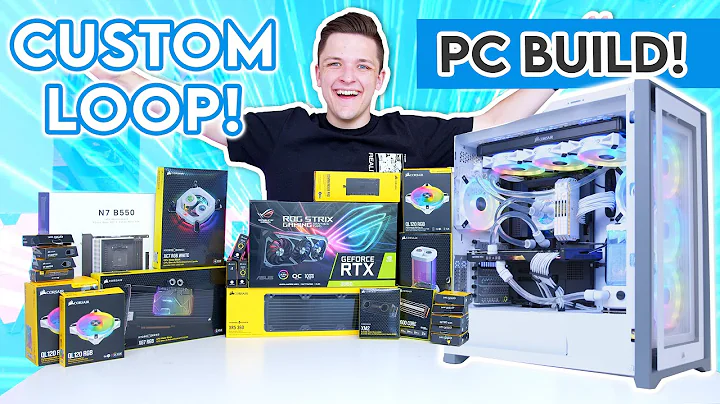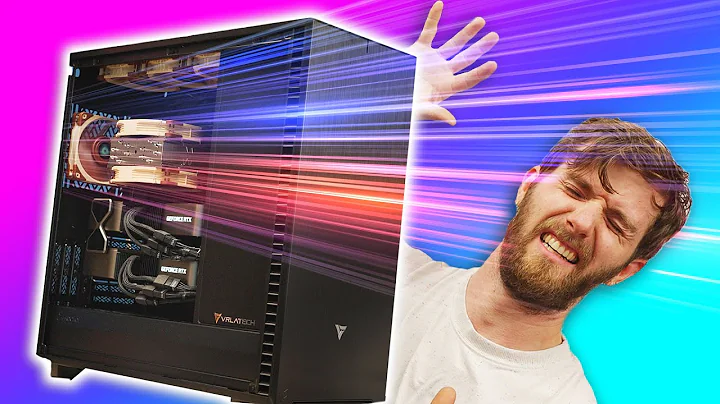Build a Powerful Plex Server with Ryzen and Windows 10
Table of Contents:
- Introduction
- Building a Plex Server
- Current specs of the Plex server
- Upgraded components for the new build
- Assembling the PC
- testing the components
- Installing the GPU and RAM
- Connecting the power supply
- Configuring the Server
- Installing the wireless card
- Setting up Windows and connecting to Plex
- Connecting the storage devices
- Troubleshooting and Modifications
- Dealing with a broken motherboard
- Drilling the hard drive bay
- Compromising the integrity of the case
- Cable Management and Final Touches
- Connecting cables and managing them
- Ensuring proper airflow and aesthetics
- Conclusion
- The completed Plex server
- Preview of the next part in the series
🖥️ Building a Plex Server: Step-by-Step Guide
Are you looking to build your very own Plex server? In this guide, we'll take you through the process of building a powerful Plex server from scratch. From selecting the components to assembling the PC and configuring the server, we've got you covered. So let's dive in and get started!
1. Introduction
Welcome to the world of Plex servers! If you're an avid media consumer, having your own Plex server can be a Game-changer. It allows you to stream your favorite movies, TV shows, Music, and more to any device, anywhere, anytime. But before we delve into the nitty-gritty details of building a Plex server, let's take a closer look at the current setup and the components we'll be upgrading.
2. Building a Plex Server
Current specs of the Plex server
The existing Plex server setup consists of a Core i7-4771 CPU, a GTX 780M GPU, and 20GB of DDR3 RAM. The media is stored on a Terramaster 422, which provides a whopping 30 terabytes of storage capacity. While this setup is functional, we'll be upgrading to newer and more powerful components to enhance the Plex server's performance.
Upgraded components for the new build
For the new build, we'll be using a GTX 1070 GPU, a 32GB kit of Corsair Vengeance DDR4 RAM clocked at 3000 MHz, and an AMD Ryzen 7 2700X CPU. The graphics card was purchased from eBay, along with the RAM, motherboard, and power supply - all bundled together at a great price of 900 Australian dollars. Unfortunately, the bundled motherboard turned out to be faulty, causing some additional challenges along the way.
3. Assembling the PC
Testing the components
Before diving into the assembly process, it's always a good idea to test the components individually. This ensures that they are in proper working condition before being integrated into the PC. By placing the motherboard on the motherboard box and connecting the GPU, we can verify that everything powers up correctly.
Installing the GPU and RAM
Once we've confirmed that the components are functional, we can proceed with their installation into the PC case. Inserting the GPU into the designated slot and installing the RAM modules are straightforward processes that require careful handling to avoid damage. With these components securely in place, we're ready to move on to the next step.
Connecting the power supply
To provide the necessary power to the PC, we need to install the power supply unit (PSU). In this case, a Thermaltake Toughpower GX1 600-watt PSU is being used. Connecting the necessary cables from the PSU to the GPU and other components ensures that they receive the required power for optimal performance.
4. Configuring the Server
Installing the wireless card
While the wireless card may not be essential for the Plex server's functionality, it offers convenience during the initial setup. By connecting the wireless card to the motherboard, we can easily configure the server without relying on a wired internet connection.
Setting up Windows and connecting to Plex
To successfully run the Plex server, we need to install the operating system (OS) and establish a connection to the Plex software. Configuring Windows appropriately and mapping a network drive allow Plex to access the media stored on the Terramaster NAS seamlessly.
Connecting the storage devices
With the OS installed and connected to the Plex software, we can proceed to connect the storage devices. In this case, a Kingston 480GB SSD is being used temporarily until a planned M.2 SSD arrives. Properly connecting the SSD ensures that the Plex server has sufficient storage capacity to house the media library.
5. Troubleshooting and Modifications
Dealing with a broken motherboard
Despite careful planning, we encountered a setback with a broken motherboard included in the bundle. This required a trip to a local store to replace the faulty part. Spending a few hours fixing bent pins and ensuring a stable CPU socket connection was a challenge that had to be overcome.
Drilling the hard drive bay
Another hurdle we faced was the inability to fit the motherboard inside the case due to an obstructive hard drive bay. This necessitated drilling out the hard drive bay, compromising the case's structural integrity. However, taking precautions to remove any debris and ensuring a clean environment reduced the risk of short circuits.
Compromising the integrity of the case
The low-cost case purchased from eBay was not designed with compatibility in mind, causing issues with component fitting. This serves as a reminder to thoroughly research and select a case that accommodates all the chosen components and allows for efficient cable management.
6. Cable Management and Final Touches
Connecting cables and managing them
After overcoming the challenges posed by the case, we proceeded to connect and manage the various cables within it. By organizing the cables neatly and ensuring proper airflow, we can optimize the PC's performance while maintaining a clean and aesthetically pleasing appearance.
Ensuring proper airflow and aesthetics
Efficient cable management plays a crucial role in maintaining optimal airflow within the PC, preventing components from overheating. By bundling and securing cables properly, airflow is improved, contributing to the overall longevity of the Plex server. Additionally, attention to aesthetics enhances the overall visual appeal of the assembled PC.
7. Conclusion
The completed Plex server
After overcoming various challenges, we successfully built a powerful Plex server capable of streaming media seamlessly. The upgraded components and optimized cable management ensure superior performance and reliability for an exceptional media streaming experience.
Preview of the next part in the series
This is just the beginning of our journey into the world of Plex servers. In the next part of this series, we'll delve deeper into configuring the Plex software, setting up automatic restarts, and troubleshooting common issues. Stay tuned for more exciting insights into the fascinating realm of Plex servers!
Highlights:
- Building a powerful Plex server from scratch.
- Upgrading components for enhanced performance.
- Testing and assembling the PC with careful precision.
- Configuring Windows and connecting to the Plex software.
- Troubleshooting challenges and making necessary modifications.
- Efficient cable management for optimal performance and aesthetics.
- The completed Plex server ready to streamline your media experience.
- Preview of the next part in the series: configuring the Plex software and troubleshooting tips.
FAQ:
Q: How much storage capacity does the upgraded Plex server have?
A: The Plex server is equipped with a Terramaster 422 NAS, offering a vast storage capacity of around 30 terabytes for your media library.
Q: Can I use a different graphics card if the GTX 1070 doesn't fit?
A: Yes, you can use an alternative graphics card that fits the case, like the 1650 used in this setup. However, it's essential to choose a GPU that meets your performance requirements.
Q: What operating system is being used for the Plex server?
A: The Plex server is running on Windows, allowing for easy configuration and integration with the Plex software.
Q: How can I ensure optimal airflow within the PC case?
A: Efficient cable management is crucial for maintaining proper airflow. By neatly organizing and securing cables, you can ensure that components receive adequate cooling, reducing the risk of overheating.
Q: Are there any recommended cases for building a Plex server?
A: When selecting a case, it's important to consider compatibility with the chosen components. Look for cases with ample space, good cable management options, and sufficient airflow for optimal performance.
Q: Will there be future articles discussing advanced Plex server configurations?
A: Yes, this article is part of a series. The upcoming article will delve deeper into configuring the Plex software, automatic restarts, and troubleshooting tips to optimize your Plex server setup.
 WHY YOU SHOULD CHOOSE TOOLIFY
WHY YOU SHOULD CHOOSE TOOLIFY

























